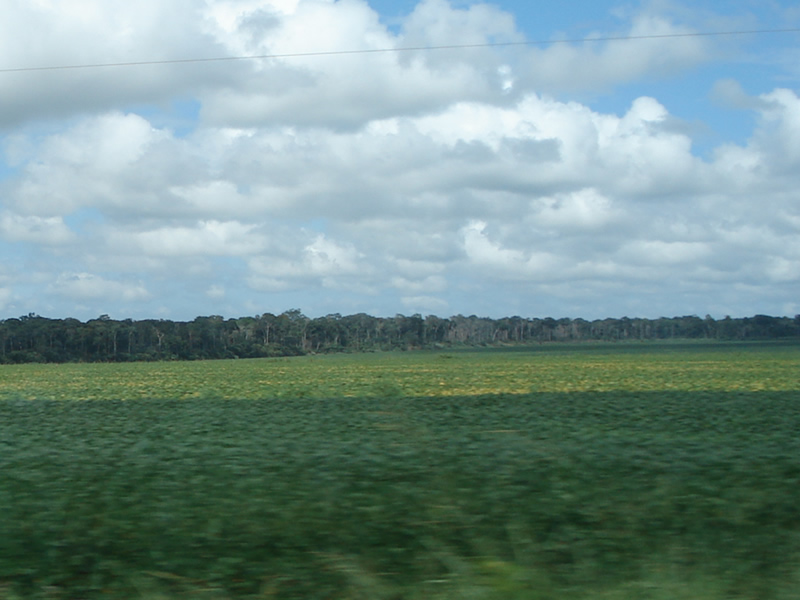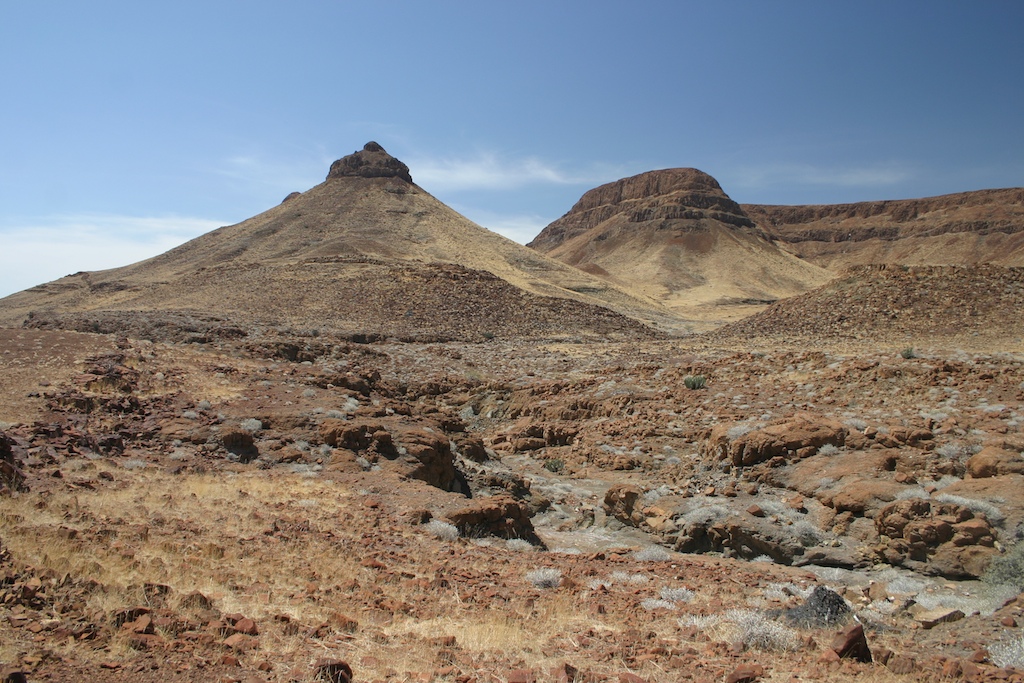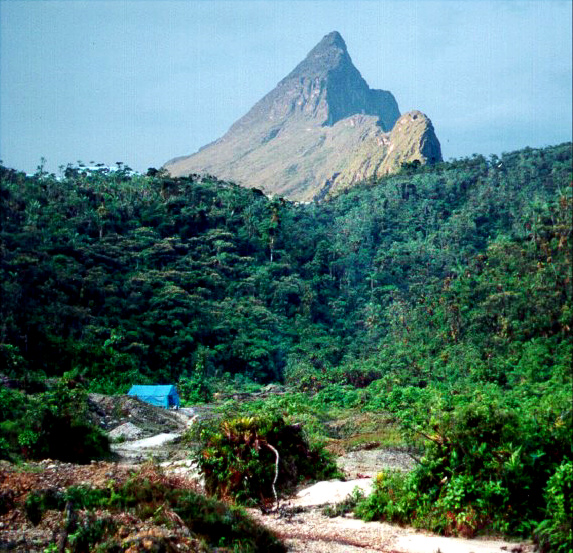|
Rio Ouro Preto Biological Reserve
The Rio Ouro Preto Biological Reserve () is a biological reserve in the state of Rondônia, Brazil. Location The Rio Ouro Preto Biological Reserve is in the municipality of Guajará-Mirim, Rondônia. It has an area of . The reserve has no inhabitants. It is east of the town of Guajará-Mirim on the Bolivian border. The Ouro Preto River, after which it is named, runs through the Rio Ouro Preto Extractive Reserve to the north. The Rio Ouro Preto Biological Reserve runs along a line of low hills that separate the Rio Ouro Preto Extractive Reserve from the Rio Pacaás Novos Extractive Reserve to the south. The reserve is in the Pacaás Novos River basin. It is in the pediplain of the centre of western Brazil, with altitudes from above sea level, in the Amazon biome. Soils include quartz sand, red-yellow podzol Podzols, also known as podosols, spodosols, or espodossolos, are the typical soils of coniferous or boreal forests and also the typical soils of eucalypt forests and hea ... [...More Info...] [...Related Items...] OR: [Wikipedia] [Google] [Baidu] |
Guajará-Mirim
Guajará-Mirim is a municipality in the Brazilian state of Rondônia. It is located at an altitude of 128 meters. Its population was 46,556 (2020) and its area is 24,856 km². Geography Location Guajará-Mirim lies along the Mamoré River, just across the Bolivian border town of Guayaramerín. It was once the southern terminus of the Estrada de Ferro Madeira-Mamoré (the Madeira-Mamoré Railway), which was inaugurated in 1912. It is the seat of the Roman Catholic Diocese of Guajará-Mirim. Conservation The municipality contains the Traçadal Biological Reserve, a strictly protected area that was created in 1990. It contains 2.33% of the Guajará-Mirim State Park, created in 1990. It contains the Rio Ouro Preto Biological Reserve, created in 1990. It contains 73.45% of the Rio Ouro Preto Extractive Reserve, also created in 1990. The municipality contains 47.5% of the Rio Cautário State Extractive Reserve, created in 1995. It contains the Rio Cautário Federa ... [...More Info...] [...Related Items...] OR: [Wikipedia] [Google] [Baidu] |
Biological Reserve (Brazil)
A biological reserve (, Rebio) in Brazil Brazil, officially the Federative Republic of Brazil, is the largest country in South America. It is the world's List of countries and dependencies by area, fifth-largest country by area and the List of countries and dependencies by population ... is a legally defined type of protected area of Brazil, a conservation unit that aims for full preservation of biota and other natural attributes without human interference. It may be visited only with prior approval of the responsible agency, and only for research or educational purposes. Definition A "Biological reserve" in Brazil is one of the Integral Protection Units defined by Article 13 of Law No. 9,985 of 18 July 2000, National System of Nature Conservation Units (SNUC). The biological reserve is public property. When it is established any private lands within its limits are expropriated. The manager of the biological reserve must prepare a management plan for approval by the respons ... [...More Info...] [...Related Items...] OR: [Wikipedia] [Google] [Baidu] |
Rondônia
Rondônia () is one of the 26 states of Brazil, located in the northern subdivision of the country (central-western part). It is bordered by Acre (state), Acre in the west, Amazonas, Brazil, Amazonas in the north, Mato Grosso in the east, and Bolivia in the south. Rondônia has a population of 1,815,000 as of 2021. It is the fifth least populated state. Its capital and largest city is Porto Velho, bathed by the Madeira River. The state was named after Cândido Rondon, who explored the north of the country during the 1910s. The state, which is home to c. 0.7% of the Brazilian population, is responsible for c. 0.3% of the Brazilian GDP. The state has 52 municipalities and occupies an area of 237,590.547 Square kilometre, km2, equivalent to the territory of Romania and almost five times larger than Croatia. In addition to this, there are other important cities such as Ariquemes, Cacoal, Guajará-Mirim, Ji-Paraná, Rolim de Moura and Vilhena. Geography Rondonia used to be home to ... [...More Info...] [...Related Items...] OR: [Wikipedia] [Google] [Baidu] |
Ouro Preto River
Ouro is a municipality in the state of Santa Catarina in the South region of Brazil. See also *List of municipalities in Santa Catarina This is a list of the municipalities in the state of Santa Catarina (SC), located in the South Region of Brazil. Santa Catarina is divided into 295 municipalities A municipality is usually a single administrative division having municipal cor ... References Populated places established in 1963 Municipalities in Santa Catarina (state) {{SantaCatarina-geo-stub ... [...More Info...] [...Related Items...] OR: [Wikipedia] [Google] [Baidu] |
Rio Ouro Preto Extractive Reserve
The Rio Ouro Preto Extractive Reserve () is an extractive reserve in the state of Rondônia, Brazil. Created in 1990, it was one of the first such reserves in Brazil. The residents extract rubber, nuts and other products in the dry season and farm or work outside the reserve in the rainy season, when large areas are flooded. Houses are built on stilts to avoid flooding and discourage animals from entering. Location The Rio Ouro Preto Extractive Reserve is divided between the municipalities of Guajará-Mirim (73.45%) and Nova Mamoré (26.55%) in Rondônia. It has an area of . The BR-421 federal highway runs east from the town of Guajará-Mirim on the Bolivian border, and enters the north part of the reserve. The reserve occupies the basin of the Ouro Preto River between two parallel east-west ranges of hills. It extends westward along the course of the Ouro Preto to where it joins the Pacaás Novos River, which forms the western boundary of the reserve. Altitudes range from ab ... [...More Info...] [...Related Items...] OR: [Wikipedia] [Google] [Baidu] |
Rio Pacaás Novos Extractive Reserve
Rio or Río is the Portuguese and Spanish word for "river". The word also exists in Italian, but is largely obsolete and used in a poetical or literary context to mean "stream". Rio, RIO or Río may also refer to: Places United States * Rio, Florida, a census-designated place * Rio, Georgia, an unincorporated community * Rio, Illinois, a village * Rio, a location in Deerpark, New York * Rio, Virginia, a community * Rio, West Virginia, a village * Rio, Wisconsin, a village * El Río, Las Piedras, Puerto Rico, a barrio Elsewhere * Rio de Janeiro, Brazil, often referred to as simply Rio * Rio, Italy, a municipality on the island of Elba in Tuscany * Rio, Greece, a community in suburban Patras People * Rio (given name) * Rio (surname) * Tina Yuzuki (born 1986), also known as Rio, Japanese AV idol Arts and entertainment Films * ''Rio'' (1939 film), starring Basil Rathbone * ''Rio'' (franchise), a film series and related media * ''Rio'' (2011 film), an animated film from 2 ... [...More Info...] [...Related Items...] OR: [Wikipedia] [Google] [Baidu] |
Pacaás Novos River
The Pacaás Novos River () is a river of Rondônia state in western Brazil. It is a tributary of the Mamoré River, which it joins from the right just above Guajará-Mirim. The Pacaás Novos River rises in the mountains in the west of the Pacaás Novos National Park and flows west from there through the Rio Pacaás Novos Extractive Reserve. The Ouro Preto River, a right tributary that flows from the east through the Rio Ouro Preto Extractive Reserve, joins the Pacaás Novos River on the west boundary of the reserve, which is defined by this section of the Pacaás Novos. See also *List of rivers of Rondônia List of rivers in Rondônia (States of Brazil, Brazilian State). The list is arranged by drainage basin, with respective tributaries indented under each larger stream's name and ordered from downstream to upstream. Rondônia is located entirely w ... References Sources * * Rivers of Rondônia {{Rondônia-river-stub ... [...More Info...] [...Related Items...] OR: [Wikipedia] [Google] [Baidu] |
Pediplain
In geology and geomorphology a pediplain (from the Latin ''pes'', genitive case ''pedis'', meaning "foot") is an extensive plain formed by the coalescence of pediment (geology), pediments. The processes through which pediplains forms is known as pediplanation. The concepts of pediplain and pediplanation were first developed by geologist Lester Charles King in his 1942 book ''South African Scenery''. The concept gained notoriety as it was juxtaposed to peneplain, peneplanation. The coalesced pediments of the pediplains may form a series of very gentle concave slopes. Pediplains main difference to William Morris Davis, W. M. Davis’ peneplains is in the history and processes behind, and less so in the final shape. Perhaps the most notable difference in form that may be present is that of residual hills which in Davis’ peneplains are to have gentle slopes while in pediplains they ought to have the same steepness as the slopes in the early stages of erosion leading to pediplanati ... [...More Info...] [...Related Items...] OR: [Wikipedia] [Google] [Baidu] |
Amazon Biome
The Amazon biome () contains the Amazon rainforest, an area of tropical rainforest, and other ecoregions that cover most of the Amazon basin and some adjacent areas to the north and east. The biome contains blackwater river, blackwater and whitewater river (river type), whitewater flooded forest, lowland and montane terra firma forest, bamboo and palm forest, savanna, sandy heath and alpine tundra. Some areas of the biome are threatened by deforestation for timber and to make way for pasture or soybean plantations. Location The Amazon biome has an area of . The biome roughly corresponds to the Amazon basin, but excludes areas of the Andes to the west and cerrado (savannah) to the south, and includes lands to the northeast extending to the Atlantic ocean with similar vegetation to the Amazon basin. J. J. Morrone (2006) defines the Amazonian subregion in this broader sense, divided into the Biogeography, biogeographical provinces of Guyana, Humid Guyana, Napo, Imeri, Roraima, Amapá ... [...More Info...] [...Related Items...] OR: [Wikipedia] [Google] [Baidu] |
Quartz
Quartz is a hard, crystalline mineral composed of silica (silicon dioxide). The Atom, atoms are linked in a continuous framework of SiO4 silicon–oxygen Tetrahedral molecular geometry, tetrahedra, with each oxygen being shared between two tetrahedra, giving an overall chemical formula of Silicon dioxide, SiO2. Quartz is, therefore, classified structurally as a Silicate mineral#Tectosilicates, framework silicate mineral and compositionally as an oxide mineral. Quartz is the second most abundant mineral in Earth's continental crust, behind feldspar. Quartz exists in two forms, the normal α-quartz and the high-temperature β-quartz, both of which are chiral. The transformation from α-quartz to β-quartz takes place abruptly at . Since the transformation is accompanied by a significant change in volume, it can easily induce microfracturing of ceramics or rocks passing through this temperature threshold. There are many different varieties of quartz, several of which are classifi ... [...More Info...] [...Related Items...] OR: [Wikipedia] [Google] [Baidu] |
Podzol
Podzols, also known as podosols, spodosols, or espodossolos, are the typical soils of coniferous or boreal forests and also the typical soils of eucalypt forests and heathlands in southern Australia. In Western Europe, podzols develop on heathland, which is often a construct of human interference through grazing and burning. In some British moorlands with podzolic soils, cambisols are preserved under Bronze Age barrows. Term Podzol means "under-ash" and is derived from the Russian () + ('); the full form is ('), meaning "under-ashed soil". The term was first given in mid-1875 by Vasily Dokuchaev, and over time adopted by soil science. It refers to the common experience of Russian peasants of plowing up an apparent under-layer of ash (leached or E horizon) during first plowing of a virgin soil of that type. Characteristics Podzols can occur on almost any parent material but generally derive from either quartz-rich sands and sandstone or sedimentary debris from magmatic ... [...More Info...] [...Related Items...] OR: [Wikipedia] [Google] [Baidu] |
Biological Reserves Of Brazil
Biology is the scientific study of life and living organisms. It is a broad natural science that encompasses a wide range of fields and unifying principles that explain the structure, function, growth, origin, evolution, and distribution of life. Central to biology are five fundamental themes: the cell as the basic unit of life, genes and heredity as the basis of inheritance, evolution as the driver of biological diversity, energy transformation for sustaining life processes, and the maintenance of internal stability (homeostasis). Biology examines life across multiple levels of organization, from molecules and cells to organisms, populations, and ecosystems. Subdisciplines include molecular biology, physiology, ecology, evolutionary biology, developmental biology, and systematics, among others. Each of these fields applies a range of methods to investigate biological phenomena, including observation, experimentation, and mathematical modeling. Modern biology is grounded in ... [...More Info...] [...Related Items...] OR: [Wikipedia] [Google] [Baidu] |





